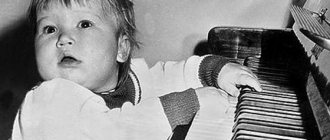Galina Ulanova biography, beginning of life
Galina Sergeevna Ulanova was born on January 8, 1910 in St. Petersburg - died in March 1998 in the Moscow region. Galina is a famous artist, choreographer, teacher and the most titled ballerina in the entire history of Soviet ballet. Father – S.N. Ulanov, ballet director.
Mom - M.F. Romanova, ballerina, classical dance teacher, worked at a theater school. Relatives performed in A. Pavlova's enterprise. Since childhood, Galina knew what ballet was and how difficult it was to achieve audience sympathy, as well as to get the leading role. Probably, Galina Ulanova was initially destined to become a dancer, because she was born into a family of ballet dancers.
The girl spent her childhood and youth in the cultural capital. It's funny, but it's unlikely that anyone who saw her show on stage, at least in a recording, would be able to assume that this sweet, graceful girl was a real tomboy.
The fact is that the parents wanted a son to be born, so the father, who was never ready for life with a girl, instilled in his daughter male hobbies. They went fishing together, looked for worms, made nets and dried fish. When Galya came to her summer cottage and the neighboring girls invited her to play with dolls or make Easter cakes in the sandbox, she proudly answered that she would rather shoot a bow and climb trees.
After the revolution, her relatives decided to send her to a ballet school - primarily because of the family’s financial problems: unlike other schools, it was a boarding school, Galya would be supported by the state, normally dressed and well-fed. She was only 9 years old then.

At first, Ulanova could not get used to the new house: on the very first morning she tried to run away. Mom visited her regularly, and the girl sobbed into her lap. But it was during that period of her life that she remembered the word “should.” Galina said: “I must... This formula appeared in my head much earlier than the desire for creative activity and than the desire to work on the ballet stage.”
So, at the age of 9, the girl was able to get into the Petrograd Theater School (later the Choreographic College), where her main teachers were Maria Romanova (Galya studied with her for the first 6 years), and then Agrippina Vaganova. The woman was cool towards her new student, who at first was clearly not on the list of the best. However, closer to graduation, Vaganova realized that all this time she had been teaching a talented ballerina.
At the age of 18, Ulanova graduated from a choreographic school and in the same 1928, almost immediately after her graduation performance, she joined the troupe of the Leningrad State Opera and Ballet Theater.
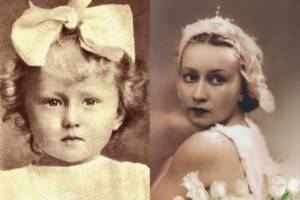
At first, it was difficult for the young ballerina to go on stage; she was very afraid of the audience, but later the fear receded. Galina was always very dissatisfied with her work, especially at the beginning of her career, and this became the impetus for many hours of rehearsals, after which the girl’s things could be wrung out, everything was so saturated with labor sweat.
At the age of 19, the ballerina received her first leading role - Odette-Odile in Swan Lake, and then she danced this role for the rest of her life.
If you want to look at the ballerina through the eyes of her fans, play the following video:
Biography of Galina Ulanova
Galina Ulanova is a famous ballerina who has become a true legend of the Soviet stage over many years. They admired her, they tried to imitate her, which is why for many years her name has remained a true synonym for Russian ballet. But what allowed this wonderful dancer to reach such impressive heights? How was her ballet career? And what successes are worth highlighting in particular? We decided to talk about all this, as well as much more, today in our article dedicated to the biography of the great dancer.
More about ballet
From her first appearance on stage, Galina Ulanova attracted people's attention. A year later she danced the leading role for the first time.
Quite quickly, Galina became an indispensable ballerina, and her work with Konstantin Sergeev, which became famous throughout the world in the thirties, is still exemplary. The dancer worked at the Mariinsky Theater until 1944.
She danced the main roles in such famous productions as “Giselle”, “The Nutcracker”, “The Fountain of Bakhchisarai” and so on. But the girl’s most important achievement in those years is considered to be the image of Juliet in Prokofiev’s ballet Romeo and Juliet, which she created in 1940. Connoisseurs of ballet art from all over the world still call her dances the standard.
During the Second World War and the Leningrad blockade, the ballerina often performed for soldiers in hospitals in Perm, Alma-Ata, and Yekaterinburg. In Kazakhstan, she also worked on the stage of the Alma-Ata State Theater, for which in 1943 she received the title of People's Artist. A year later, the dancer goes to the Moscow Bolshoi Theater. On this occasion, Galya later said that she would never have left her favorite stage in Leningrad, but everything was decided for her by people “from above” - from the Central Committee. Everything was quite strict: either the girl dances on the main stage of Russia, or she doesn’t dance at all.
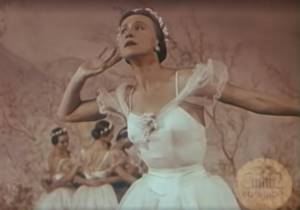
Despite the difficulties, at the Bolshoi Theater Gali's talent shone with new colors. Shows with her participation became the pearls of the theater, and the scene of Giselle’s madness in the ballet was recognized as the pinnacle of tragedy. It was with the Bolshoi Theater that the dancer first went on tour abroad.
In the hall of the Vienna Opera House she received a standing ovation, and in London the girl created a sensation. The British media wrote the next day that no prima singer had had such success since the times of the great Anna Pavlova. Moreover, it is necessary to highlight that Galina was 46 years old at that time.
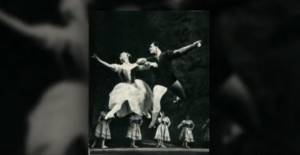
After 4 years, the ballerina performed on stage for the last time. She presented the ballet Chopiniana to fans and ended her ballet career. But she continued to work at the Bolshoi Theater. Until the end of her life, the country's best ballerina remained there as a teacher. Among her students were such famous stars as N. Tsiskaridze, N. Semizorova, I. Prokofieva and many other artists. The woman also interacted with soloists of the Paris, Hamburg, Sydney, Tokyo and Stockholm ballets.
In addition, Prima, as the chairman of the jury, judged international competitions, not only in the Moscow region, but also in Varna, Bulgaria. By the way, at one of the official festivals she appreciated the performance of another great artist - Maris Liepu.
Many people called Galina Ulanova a goddess, do you want to know why? Watch the following video:
Ballerina
From the very first productions, Galina Ulanova attracted the attention of audiences and critics. A year later she danced the leading role for the first time: it was Odette-Odile in Swan Lake. Pretty soon the girl becomes an indispensable ballerina, and her duet with Konstantin Sergeev, which thundered throughout the world in the 30s and 40s, is still considered exemplary. Galina worked at the Mariinsky Theater until 1944. She danced the main roles in such performances as “Giselle”, “The Nutcracker”, “The Fountain of Bakhchisarai” and many others. But the ballerina’s main achievement during that period is considered to be the image of Juliet in Prokofiev’s ballet Romeo and Juliet, which she created in 1940. Ballet connoisseurs all over the world still call that performance a benchmark.
During the Great Patriotic War and the Leningrad blockade, Ulanova, as a ballet dancer, performed for the wounded in hospitals in Perm, Alma-Ata, and Yekaterinburg. In Kazakhstan, she also danced on the stage of the Alma-Ata State Academic Opera and Ballet Theater, for which in 1943 she received the title of People's Artist of the Kazakh SSR. A year later, the ballet star moved to the Moscow Bolshoi Theater. On this occasion, Galina Ulanova later said that she would never have left her native Leningrad stage, but this decision was dictated “from above” - from the Central Committee. In fact, the choice was simple: either the ballerina dances on the main stage of the country, or does not dance at all.
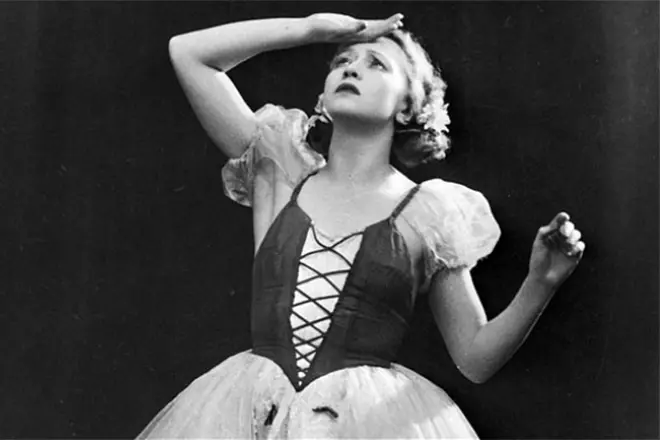
Galina Ulanova in the ballet “Giselle” | News from Russia, CIS and the world
However, at the Bolshoi Theater, Galina Sergeevna’s talent sparkled with new shades. Performances with her participation became pearls of the theatrical repertoire, and the scene of Giselle’s madness in the ballet of the same name was recognized as the pinnacle of tragic dance. And it was with the Bolshoi Theater that Galina Ulanova first went on tour abroad. In the hall of the Vienna Opera House she received a standing ovation, and in London the actress had an unprecedented triumph. British journalists wrote the next day that no ballerina had had such success since the days of the legendary Anna Pavlova. Moreover, it should be noted that Ulanova was already 46 years old at that time.
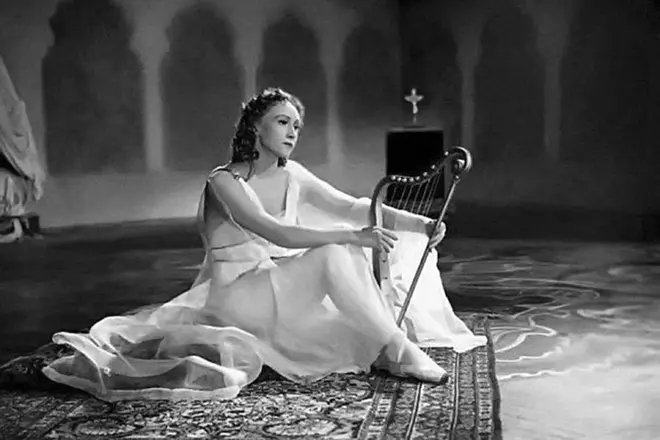
Galina Ulanova in the ballet “The Fountain of Bakhchisarai” | Essays Student
Four years later, the dancer appeared on stage for the last time. She presented the ballet Chopiniana to the audience, after which she ended her career as a ballerina. But the woman did not leave the Bolshoi Theater. Until the end of her life, Galina Sergeevna remained there as a choreographer-tutor. Among her students were such stars of Russian ballet art as Nikolai Tsiskaridze, Nina Semizorova, Irina Prokofieva and several dozen other artists who received public recognition. Galina Ulanova also worked with soloists of the Paris, Hamburg, Sydney, Tokyo and Stockholm ballets.
In addition, the legendary ballerina, as the chairman of the jury, judged International competitions, not only in Moscow, but also in Varna, Bulgaria. By the way, at one of these festivals she praised the performance of another future master of the Soviet stage, Maris Liepa.
Meet the leader
The first time Stalin saw Galina was in Esmeralda. Then the young artist played the role of Diana. According to the scenario, the girl had to aim her bow directly towards the box where the statesman was located. Galya, before performing this manipulation, froze for a second - she really understood that for this the NKVD could accuse her of an attempt on the life of the leader. But, fortunately, everything went well. Stalin was shocked by the show and even invited the entire troupe to his Kremlin for a reception.
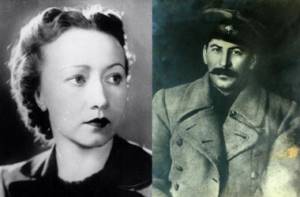
There was a banquet in the Kremlin, after which Galina was invited into the hall and seated next to Stalin. Later, journalists asked the ballerina if she was afraid to sit next to the leader. The girl replied that she was not scared, but very embarrassed because of the high status of Joseph Vissarionovich, who was nearby.
The statesman greatly appreciated the ballerina’s talent, so she was awarded the Stalin Prize 4 times. But the titles and even all the amazing titles could not force the dancer to subordinate her creativity to the political system. Galina was surprisingly strong; many would have carried out the order without any complaints, but the girl did not want to submit to government authority.
Meeting Stalin
For the first time, Joseph Vissarionovich saw Ulanova in Esmeralda. The ballerina performed the role of Diana. During the performance, Galina aimed her bow at the box where Stalin was sitting. The ballerina’s heart sank: the NKVD could easily accuse the artist of an attempt on the life of the leader. But everything worked out - Joseph Vissarionovich invited the whole troupe to a reception in the Kremlin.
After the banquet, 25-year-old Galina was asked to go to the cinema hall and was seated next to the leader. Later, journalists asked Ulanova if she was scared. The ballerina said that there was no fear, only a feeling of awkwardness due to Stalin's high status.
Joseph Vissarionovich assessed the ballerina this way: “Galina is a classic.” The artist was awarded the Stalin Prize four times. But, despite the ranks and titles she received, Ulanova did not want to have any relations with the authorities. Although it was the Kremlin that turned her into an ideological icon and symbol of Soviet ballet.
Personal life
In 1940, at the premiere of the famous play “Romeo and Juliet,” Ulanova again stood out. She played then, naturally, the main role. Romeo in the new production is performed by Konstantin Sergeev. Working for a long time and experiencing the story together, the artists fell in love. Feelings between the couple flared up very seriously. Konstantin treated Galina with respect, so he always called her “you.”
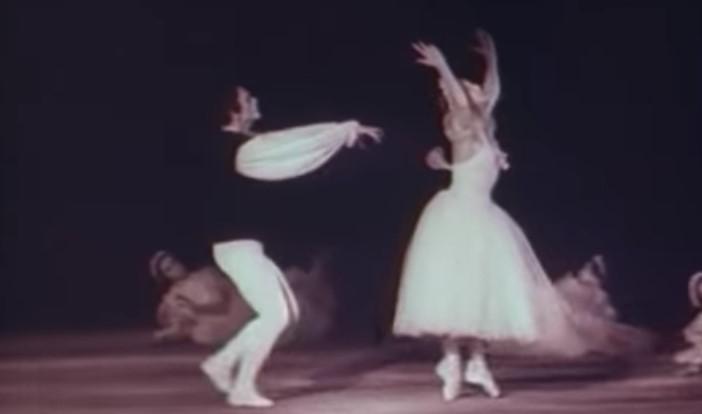
Unfortunately, the relationship could not last long, as the dancer was transferred to Moscow. As a result, the duo broke up. But this is far from the last romance in a woman’s life.
Galina Ulanova
She wore a sailor suit, fished and dreamed of becoming a sailor. But fate prepared another path for Galina Ulanova - to cut a “ballet window” to Europe through the Iron Curtain and be honored with monuments in St. Petersburg and Stockholm during her lifetime. “An ordinary goddess,” Alexei Tolstoy said about the ballerina.
The road to ballet school for Galina Ulanova was predetermined by musicality, grace and birth into a ballet family. Father Sergei was a director of the Mariinsky Theater troupe, mother Maria was a ballerina and classical dance teacher. That is why the other side of ballet was not a secret for Galya and the upcoming classes did not evoke hidden delight, but tears.
“I had the distinct impression that mom never rests and never sleeps. This was probably pretty close to the truth. And I, hearing conversations about how I too would have to study and become a ballerina, thought with horror and despair: will I really have to work so hard and never sleep?” Galina Ulanova
The first teacher was my mother. At first, she helped me fight the pain of walking on pointe shoes, and then overcome my natural shyness when going on stage. Among the pupils, my daughter did not stand out. At first, Galina Ulanova’s second teacher, Agrippina Vaganova, did not see the future prima in the girl. Only at the end of her studies at the Leningrad Art School did it become clear: a real star was rising, “the genius of Russian ballet” - as Sergei Prokofiev said about Ulanova.
Florina in The Sleeping Beauty became the premiere role of a young ballerina at the Leningrad Kirov Theater - the current Mariinsky Theater. The first step from ballet class to the stage: “I walked onto the stage neither alive nor dead. The velvet of the tiers, the lights of the spotlights, the curtains - the whole world was spinning madly and capsizing... I didn’t even experience any pleasure from the performance, any other feeling except fear and the desire to do everything just as you were taught.”
At the age of 19, Galina Ulanova received her first leading role - Odile-Odette in Swan Lake, but only Giselle helped her fall in love with her heroine for the first time and master the art of transformation. To get a feel for the role, Ulanova went to Tsarskoe Selo. It was at this moment - alone, in nature - that an insight came, which helped the ballerina live every role in the future.
The image of Juliet became special for Galina Ulanova: the sincerity and tenderness of the Shakespearean heroine were so close to the ballerina. The unique lyrical duet with Romeo - Konstantin Sergeev became one of the last on the stage of the Kirov theater. During the Great Patriotic War, Ulanova danced in theaters and hospitals in Perm, Alma-Ata, Sverdlovsk, and in 1944 she became a Muscovite, entering the Bolshoi.
“Dear Galina Sergeevna! I watched you yesterday in “Cinderella” with a wet face the entire time. This is how the presence of everything truly big nearby in space affects me... How did you manage to extract plastic and spiritual continuity from the abrupt, conventional and disintegrating art of ballet? I wasn't going to tell you anything that you didn't know. You, naturally and deservedly accustomed to stronger epithets and praise and more extensive confessions. My old heart is with you."
Boris Pasternak
Through Galina Ulanova, Russian ballet was re-opened to European audiences. For the first time in 1956, the Bolshoi Theater went on tour to London. Ulanova danced Giselle and Juliet. An extraordinary triumph, according to foreign critics - for the first time since Anna Pavlova. In 1960, the prima said goodbye to the audience, performing in Chopiniana, and became a choreographer-tutor.
“You, Mozart, are God, and you don’t know it yourself.” My dear, beautiful Galina Sergeevna, I always want to tell you this. I want you to know that seeing you and your art is the highest happiness!”
Faina Ranevskaya
Among Galina Sergeevna’s students are Vladimir Vasiliev, Nina Timofeeva, Lyudmila Semenyaka, Nina Semizorova, Malika Sabirova, Irina Prokofieva, Ida Vasilyeva, Alla Mikhalchenko, Nikolai Tsiskaridze. And she “passed on” her Juliet to Ekaterina Maksimova: “For a long time, I couldn’t start preparing the part of Juliet with any of my students. Saying goodbye to her is like saying goodbye to a living person. Once I was in Italy, we were taken to Verona. In Verona, I stood in front of Juliet's balcony, at the monument above the crypt. And here, at Juliet’s crypt, I felt that I would never dance again, it was very sad..."
Having worked as a choreographer at the Bolshoi Theater for almost 30 years, Galina Sergeevna was going to tell the story of her life by writing a book for her 90th anniversary. Alas, the plans were not destined to come true. But you can touch the memory of the great ballerina by visiting the museum in the house on Kotelnicheskaya Embankment. In Galina Ulanova’s apartment everything is the same as during her life: paintings, books, letters of admiration... a whole era.
“I revere Ulanova the artist and admire Ulanova the woman, charming, sophisticated, elegant. Not always and not everyone manages to combine this. You remain like this both in the heat of work and after rehearsals that exhaust everyone. It’s good that we have Ulanova, it’s good that we have her in the theater. Her presence alone ennobles. When you think about you, your soul warms.”
Elena Obraztsova
Adjustments made by work in the capital
The post-war years seriously affected Galina's life. For the girl, moving to Moscow was a blow. After all, she had to not only forget about her favorite place of work, but also about her boyfriend.
The artist had no relatives in the capital, so she had to live in hotels. Galina lived well in the city, because she was pampered with attention, excellent treatment, awards and titles. Ulanova realized that in Moscow they wanted to make her a “pillar noblewoman.”
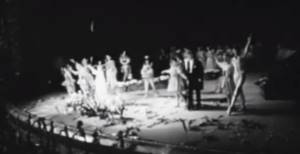
This frightened her, but what was more confusing was that the state wanted to connect her love of creativity with politics. One day, the secretary of the Bolshoi Theater party committee asked the ballerina to thank the government leadership on behalf of the artists for their assistance in matters of creativity. Ulanova flatly refused, finally saying that she was studying ballet, not politics.
Message about Galina Ulanova
A message about Galina Ulanova, grade 5, will briefly tell you a lot of interesting information about the life and work of the famous ballerina, a true legend of the Soviet stage.
Galina Ulanova biography briefly
The future ballet star was born in St. Petersburg on December 26, 1909 in the family of the famous ballet director Sergei Ulanov. The girl’s journey to the stage began at the age of 9. In 1918 she entered the Petrograd Choreographic School. At first she studied under the guidance of her mother, and then the ballerina Agrippina Vaganova became her teacher. After graduating in 1928, Galina's graduation ballet was highly praised by critics and teachers. After receiving her diploma, the girl was accepted into the Leningrad Opera and Ballet Theater (Mariinsky Theatre).
After her first performances on the ballet stage, the talented dancer attracted the attention of not only ordinary spectators, but also famous critics. At the age of 19, in 1929, Ulanova received her first leading role in the production of Swan Lake. This was followed by many roles on stage. The dancer’s most famous ballet roles: Masha in “The Nutcracker”, Giselle in the production of the same name, Maria in “The Fountain of Bakhchisarai”. Galina Ulanova's most striking role was the role of Juliet in the adaptation of Shakespeare's play. After performing the part, she became a real star.
After the war, the ballerina was almost forcibly sent to work in Moscow at the Bolshoi Theater. Here she was awarded numerous awards and titles of People's Artist of the RSFSR and the Soviet Union. The artist was actively touring. So, in 1942, Galina Ulanova worked in Alma-Ata, at the Kazakh State Academic Opera and Ballet Theater. 3 years later he performs in Vienna, London and Stockholm, Paris and Sofia.
Galina Ulanova made a huge contribution to culture . She elevated Russian ballet to a new international level. Abroad she was received warmly and with applause. She was rightly called the symbol of Russian and Soviet ballet. For her outstanding performances, she was awarded the Bulgarian Order of Cyril and Methodius, the Order of the Lion of Finland, the French Order of Arts and Letters, and the Italian Viotti Prize. The ballerina had the title of honorary member of art academies of different countries: Brazil, Venezuela, China, USA, East Germany.
The talented ballerina lived and performed in Moscow from 1944 to 1960. At the end of her career, Galina Ulanova began working as a teacher. Her students over the years were Lyudmila Semenyaka, Ekaterina Maksimova, Nina Semizorova, Nina Timofeeva and others. The dancer’s merits are so great that a postage stamp was issued in her honor. She participated in various international competitions and creative festivals, where she worked as a jury member and teacher. During her career she managed to star in 6 films.
The ballerina died on March 21, 1998 in Moscow at the age of 89.
Galina Ulanova interesting facts
- Galina Ulanova was married 3 times . Her husbands were artists. She was in a relationship with Yuri Zavadsky (director), Ivan Bersenev (actor), Vadim Ryndin (artist).
- The ballerina had no children.
- She loved to take long walks and take care of animals.
- Until her death, Galina Ulanova was in excellent physical shape.
- In the last months of her life, she began to write memoirs. But after her death, no notes or photographs were found. Obviously, the artist burned them.
- The first and last performances for her participation were the same - “Chopiniana”.
- The most titled ballerina in the entire history of Russian ballet. One of the greatest ballerinas of the 20th century.
We hope that a short message about Galina Ulanova helped you learn about the legend of Russian ballet, the great dancer. You can leave a short message about Galina Ulanova using the comment form below.
New love
Galina did not like to talk about her personal life; happiness loves silence, as they say. All that was known was that all the male ballerinas were respectable people. The first time she got married very early. Isaac Melikovsky then became her husband. The second marriage also quickly broke up. Later, Ulanova admitted that her pain was not the ruined relationship, but the lack of children. The artist blamed her childlessness on her relatives, who convinced the girl to rely not on children, but on her career.
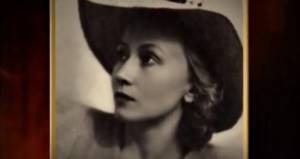
Childhood and family of Galina Ulanova
Galina Ulanova was born on December 26, 1909 (January 8, 1910 according to the new style) in the city of St. Petersburg. Her father Sergei Ulanov was a famous ballet director in the RSFSR. Mom - Maria Romanova - worked in a related field as a teacher at a choreographic school. Having been born into such a family, our today’s heroine probably could not have chosen any other path for herself. The fate of a ballerina was destined for her from birth. That is why her successes have always been so grandiose.
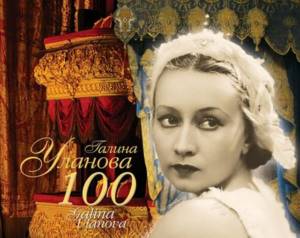
The legendary ballerina Galina Ulanova was born more than 100 years ago
The most vivid feelings
Director Ivan Bersenev became joy and real happiness for Galina. This young man gave the artist 2 bright years of marriage. Ivan loved two ladies - Ulanova and his wife. It was the two of them who cried over the death of Ivan Bersenev, who died at a relatively young age.
After this, Vadim Ryndin captured Galina’s heart. He, like the other men of the artist, admired her. But Vadim really liked to drink, the girl could not come to terms with this. The man was also very jealous, which at first was even flattering.
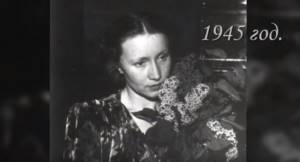
Once a dancer in adulthood was asked by journalists what she regretted in her personal life. Galina replied that she always wanted to have a strong family, one man for the rest of her life, to whom she would give herself completely. The star also admitted that she doesn’t know how to cook at all, but dreams of correcting this misunderstanding after finishing her career.
Galina Ulanova: biography
Galina Sergeevna Ulanova is a legendary Soviet ballerina who raised the possibilities of dance art to an unprecedented level. She was not only admired, she was imitated. For many years, in many countries, teachers of ballet studios, teaching their students, demanded that they do steps “like Ulanova.” And it’s not just that Galina Sergeevna is the only ballerina in the world to whom monuments were erected during her lifetime, and even in two cities at once - in St. Petersburg and Stockholm. In addition, the largest rehearsal hall of the Moscow Bolshoi Theater bears the name of the famous ballet actress.
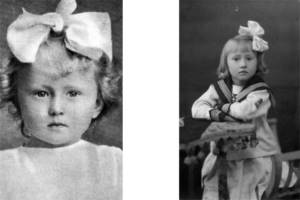
Galina Ulanova in childhood
Probably, fate immediately destined Galina Ulanova to be a dancer, because she was born into a family of ballet dancers at the Mariinsky Theater. Later, her father, Sergei Nikolaevich Ulanov, became a theater director, and her mother Maria Fedorovna Romanova passed on her extensive dance experience to the choreographic school. Galya spent her childhood and youth in her native St. Petersburg. It's funny, but hardly anyone who saw her perform on stage, at least in recordings, would have been able to guess that this fragile, graceful woman was a real tomboy at an early age.

Little Galina Ulanova with her mother Maria Romanova | To be remembered
The fact is that the parents were expecting the birth of a son, so the father, who was never ready to play with the girl, instilled in his daughter boyish hobbies. They went fishing together, dug for worms, made nets and dried fish. When Galya came to the dacha and the neighboring girls called her to play with dolls or make Easter cakes in the sandbox, she proudly answered that she preferred to shoot a bow and climb trees.
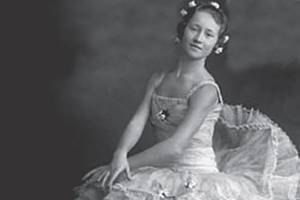
Galina Ulanova at the choreographic school | To be remembered
But her carefree childhood came to an end when Galina turned nine years old. She was accepted into the elementary class of the Petrograd Choreographic School, and she began to comprehend the art of ballet under the guidance of her mother, Maria Romanova. And in her graduating classes, Ulanova adopted the experience of the icon of Russian ballet - Agrippina Vaganova, after whom this educational institution would later be named, and among the people it would be called nothing less than “Vagankovsky”.
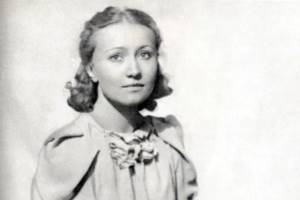
Galina Ulanova in her youth | Grand Theatre
At the age of 18, Galina graduated from the choreographic school and in the same 1928, virtually immediately after the graduation performance, she joined the troupe of the Leningrad State Opera and Ballet Theater, which soon received the name of Sergei Kirov, and later regained its historical name - the Mariinsky Theater.
Monument during life
Galina was truly a unique person. Realizing this, the president of the UNESCO Dance Commission decided to open a monument to Ulanova in Stockholm. It is interesting that the monument was erected during her lifetime.
Galina was present at the opening of the monument. But due to natural modesty, she constantly hid her face in her collar, repeating to herself that the monument was erected not to her, but to the great power of ballet.
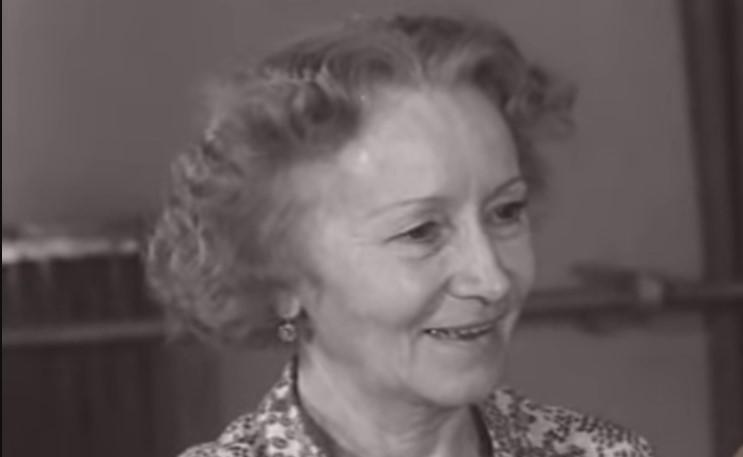
Almost everyone loved the Soviet ballerina. Beyond monuments and memorials, there are also amazing displays of gratitude. Flower growers from Holland developed the “Ulanova” tulip variety in her honor, Crimean astronomers named an asteroid after her, and the Russian Central Bank issued a coin with Ulanova’s profile.
It is not surprising that Ulanova is valued even after death. What will other idols say about her?
Death
In recent years, the ballerina lived modestly and alone in a large apartment on Kotelnicheskaya Embankment. It’s interesting that she furnished the room with furniture left over from her parents. Galina Ulanova never chased material values, had neither a dacha nor a car, and considered her students to be her main asset. And I was very worried that I couldn’t dance on stage myself. They say that in the last months of her life, Galina Sergeevna began to write memoirs from her life. Knowing her frankness, one can assume that the memoirs would be very sensual and, perhaps, poignant. But subsequently no notes or even photographs were found; apparently, Ulanova burned them.

Monument to ballerina G.S. Ulanova. Victory Park, St. Petersburg
The legendary ballerina passed away on March 21, 1998 at the age of 88, and was buried at the Novodevichy cemetery. Later, documentaries “The Loneliness of the Goddess” and “The World of Ulanova” were made about the great dancer and a number of books were written, including “Days with Ulanova” by Albert Kahn, “I Didn’t Want to Dance” by Sania Davlekamova and “Galina Sergeevna Ulanova” by Valerian Bogdanov -Berezovsky.
The Russian ballerina was revered and paid tribute all over the world. In addition to monuments and plaques, there are also unusual expressions of gratitude. Dutch flower growers developed the “Ulanova” tulip variety in her honor, Crimean astronomers named a new asteroid after her, the Central Bank of Russia issued a valuable coin with Ulanova’s profile. And a memorial museum was created in her apartment on Kotelnicheskaya Embankment.
Life with Agafonova
At the age of seventy, the artist was lucky enough to talk with journalist Agafonova. She was twenty years younger than Galina. Subsequently, the women began to become friends. Ulanova allowed Agafonova to become her secretary. After that, they moved in together and began to live together, which gave rise to a lot of gossip.
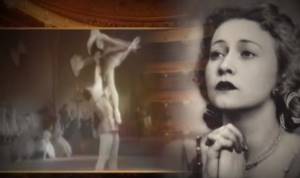
Tanya helped the ballerina in all everyday matters, but the friendship was destroyed by the sudden death of Agafonova. Galina was very worried about her. For Prima, the loss of a friend was like the loss of her only child.
Meeting Agafonova
In the late 70s, Galina Ulanova, whose biography is a role model for all ballerinas, met journalist Tatyana Agafonova. She became the artist’s personal secretary and moved into her apartment. Tatyana was 20 years younger than the great ballerina. Their living together caused bewilderment among everyone, and also gave rise to a lot of gossip and gossip. Gradually, old acquaintances and friends became rare guests in the Ulanov house.
Tatyana completely relieved Galina Sergeevna of everyday worries. After all, Ulanova had no idea how to call a plumber if the tap started leaking. She had no idea where the savings bank was and did not know how to turn on the TV or washing machine. In 1993, Agafonova became seriously ill. Galina Sergeevna learned to cook, give massage and began to look after Tatyana. Ulanova even had to give up long trips, but she did not quit her job and went to the theater every day. Agafonova died in 1994.
Interesting Facts

Not everyone knows what Galina Ulanova loved, whether she had a hobby. There is a list of interesting facts that will help you get to know the ballerina better:
- First fact. Galina had practically no hobbies; she devoted herself entirely to ballet. But she had passions, for example, she loved music very much.
- Second fact. The most comfortable state for a dancer is loneliness. She usually didn't approach anyone first.
- Third fact. Ulanova loved animals.
- Fourth fact. I tried to keep myself in shape. The morning began with exercises, which included ballet steps. And in old age, her weight remained the same as in her youth - 49 kg. She was always elegant and graceful.
- Fifth fact. She did not consider herself a home person and blamed her parents for this.
Job in Moscow
After the war, Galina Ulanova's life changed. The management made it clear to her that she needed to move to Moscow. And the ballerina was transferred almost by order. This was a big blow for Galina, because she was separated not only from her favorite theater and her favorite city, but also from her loved one.
There were no relatives in the capital, so the dancer lived in hotels. The ballerina's management and colleagues treated her kindly. Galina, in turn, also tried not to disappoint them. Ulanova was not deprived of awards and titles, but they tried to make her a noblewoman.
Although if Galina Sergeevna was against it, then any question would be resolved by itself. One day, the secretary of the Bolshoi Theater party committee asked her to speak and thank the country's leadership on behalf of the artists. Ulanova said that she is engaged in ballet, not politics. She was no longer bothered with such requests. But any ceremonial performance or “court” concert was not complete without the participation of a ballerina.
The beginning of Galina Ulanova's creativity
Galina Ulanova began her journey to the big stage at the age of nine. In 1918, she entered the Petrograd (Leningrad) Choreographic School, where she subsequently began studying first under the guidance of her mother, and then the ballerina Agrippina Vaganova.
The girl graduated from the choreographic school in 1928. Her graduation ballet received high marks from teachers and critics, and therefore, almost immediately after receiving her diploma, the girl Galina was hired by the Leningrad Opera and Ballet Theater (currently the Mariinsky Theater).
Ulanova's art
Galina Ulanova is a great Russian ballerina, a lot has been written about her. However, to this day it remains unsolved: how did she manage to so harmoniously combine lofty romantic ideals with the utmost truthfulness of her experiences? Transform complex “formulas” of dance into revelations of the soul, close to any inexperienced viewer, and turn a simple gesture, step, run into an action that will shock any subtle connoisseur with the emotional power?
The world perceived Galina Ulanova as a sublime ideal, as a beautiful dream of perfection, and showed her its honors. The only ballerina during her lifetime, monuments were erected in St. Petersburg (1984, sculptor M.K. Anikushin) and Stockholm (1984, sculptor E.A. Janson-Manizer). The Ulanova tulip variety was developed in Holland. In France, the famous Salle Pleyel, after reconstruction, opened with a performance in her honor.
Galina Ulanova is the first “star” who opened the era of foreign tours of Soviet ballet. The most significant were the first tour of the Bolshoi Theater in 1956 in London, where the great ballerina danced Giselle and Juliet and had a triumphant success, the like of which, according to foreign authorities, they had not seen since the time of Anna Pavlova. Subsequently, the Bolshoi's tours invariably opened with a performance led by Ulanova.
On October 21, 1928, Galina Sergeevna made her debut on the stage of the Mariinsky Theater as a professional ballerina. She performed the role of Florine in the ballet The Sleeping Beauty.
Outside the theater
Galina Ulanova's circle of interests was limited to art, as was her personal life. She was married three times, and all three of her chosen ones are outstanding people of art: director Yuri Zavadsky, actor and director Ivan Bersenev, artist Vadim Ryndin.
She did not have any hobbies or activities related to her profession. But, of course, there were passions: “Nature is the same to me as music. Just as mysterious,” said the ballerina. She especially loved animals.
Galina Ulanova was strict with herself. Early in the morning I did my own exercises for an hour, which included ballet steps. And in her declining years, her weight remained the same as in her artistic years - 49 kg. She was always elegant, distinguished by a light, graceful gait. A magical personality whose work constituted an entire era in the history of world art.
On December 29, 1960, the last performance of Galina Ulanova took place, who ended her career with the same ballet with which she began, “Chopiniana,” which at one time became her graduation performance.






